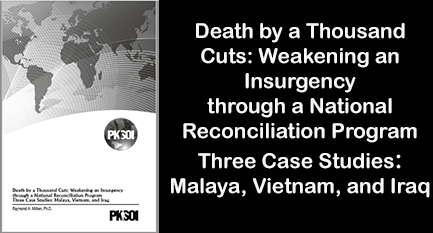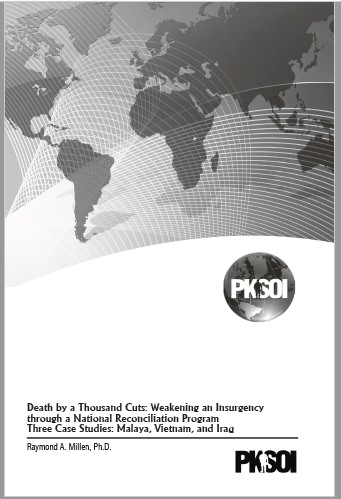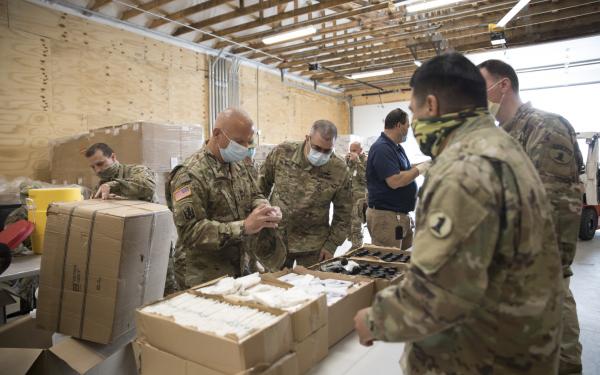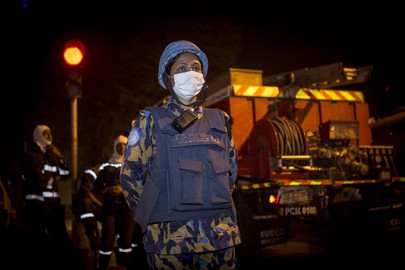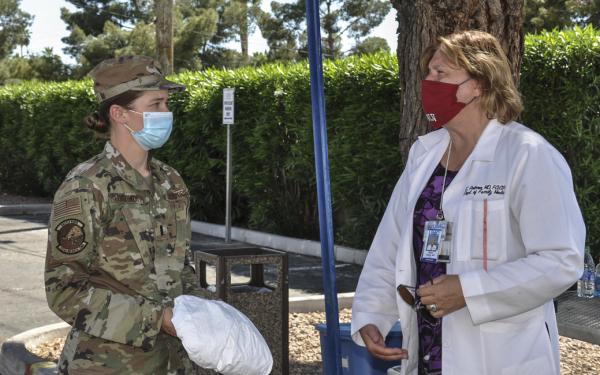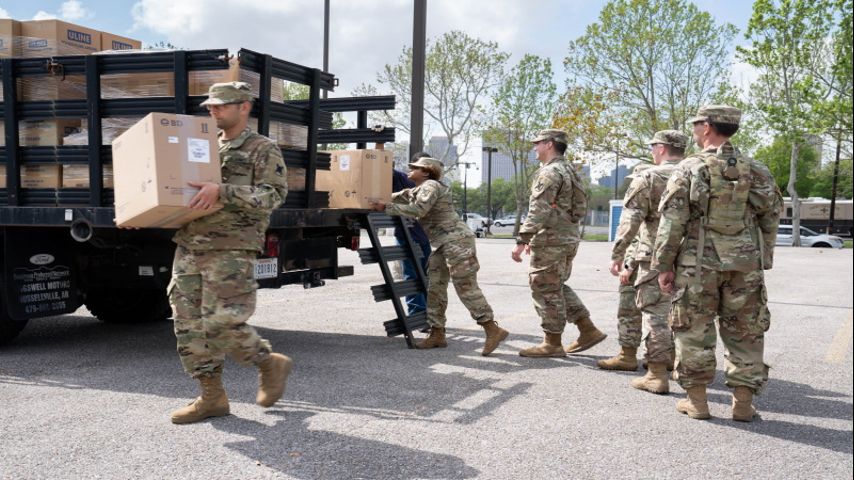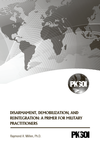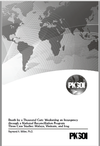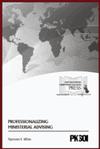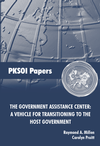By Dr. Raymond A. Millen and Travis Bolio
Peacekeeping and Stability Operations Institute
The purpose of stability in international orbiting space is to create and sustain an environment for the peaceful pursuit of international interests, namely science, technology, exploration, and commerce. While international competition and cooperation in international orbiting space have continued for decades, no country has pursued military conquest as a means to gain dominance in this domain or to gain a military advantage over other states. The growing investment and presence in space presage the need to ensure stability and accessibility for peaceful expansion.
The Eisenhower administration’s hallmark space policy (NSC 5814/1) sought to reserve outer space for peaceful and scientific purposes. Notably, the policy proscribed the militarization of space, that is, no permanent placement of weapons in orbit. The exploration and use of space have progressed since the Eisenhower administration created the National Aeronautics and Space Administration (NASA). By the first two decades of the 21st century, multiple countries have placed satellites in orbital space for global communications, global positioning systems (GPS), surveillance, the internet of things, and cyber physical systems (CPS).[1] Multinational involvement in space is progressing exponentially, which also portends greater complexity and perhaps, instability unless judiciously managed.
Reinforcing US space policies, the United Nations’ Treaty on Principles Governing the Activities of States in the Exploration and Use of Outer Space, including the Moon and Other Celestial Bodies (19 December 1966) emphasized international peaceful cooperation in outer space. Specifically, the treaty outlined international cooperation, exploration, and scientific research of outer space and celestial bodies. As important, the treaty prohibited national claims of sovereignty, establishment of military bases and weapons, and the placement of weapons of mass destruction in orbit or on celestial bodies.[2] Together with US space policies, the UN space treaty established the basis for peaceful international activities in space.
Space exploration, along with a greater understanding of the universe, has continued with orbital telescopes, manned space stations, manned space missions, and unmanned space exploration systems. The utility of space is not limited to the physical domain but extends into the electromagnetic and the internet domains. As the leading pioneer of space exploration, the United States should continue developing space systems with the purpose of enhanced space stability and exploration. Additionally, US leadership should encourage more nations to participate jointly in space efforts, as cooperative burden-sharing and mutual benefits. This paper explores development mechanisms to enhance space exploration, research, and stability: normalized space terminology; near-term stability; mid-term stability; and long-term stability. The intent is to provide broad recommendations for mankind’s expansion into outer space in a logical manner.
Normalized Space Terminology
The domain of space encompasses three distinct dimensions: physical, network, and cognitive. The physical dimension comprises the orbital area and proceeds out to the moon, outer space and other celestial bodies. The network dimension includes the interconnected systems and processes that permit command and control of data and information around the world. The cognitive dimension covers the range of mental and conceptual processes needed to understand and operate in the space domain.[3]
The characterization of the space domain is broader in scope, as it is not limited to geographic or physical borders. This paper identifies four sub-domains as a basis for discussion: near Earth orbit, travel vectors, outer space, and the electromagnetic spectrum. All sub-domains operate in the three distinct dimensions; however the electromagnetic spectrum can have some unique interactions with the physical dimension. A clear, mutual definition of these domains helps to establish authorities and regulations for abiding stability in space.
Near Earth orbit is the area closely surrounding the planet, in which gravity has a proximate attraction on objects. This domain is commonly used for satellites and is filled with decades of space debris. It serves as a strategic gateway for spacecraft passing through Earth’s atmosphere. As such, administration and management of space travel within near Earth orbit shall become a growing challenge.
Travel vectors are identified pathways for outer space destinations and interplanetary travel, as well as returning traffic. Travel vectors vary in terms of time and space as planets and other bodies orbit the Sun. Interplanetary traffic-peaks would correspond with planetary orbits passing closest to Earth. Similar to sea lanes and air corridors, as space traffic becomes more congested, administration and management of travel vectors become a safety issue.
The outer space domain is the vast frontier for exploration, research, and discovery of wondrous phenomena. While outer space exploration and colonization may serve to unify human efforts, they may also spur economic competition and potential disputes. Establishing stability mechanisms and a sense of multinational cooperation prior to inhabiting outer space serves to foster comity.
Exploration may expose humans to exotic viruses, so medical systems must be integral to stability practices. Medical protocols for returning space travelers, such as quarantine, detection, and disinfection, are needed to preclude potential pandemics. Similarly, standard protocols for contact with or discovery of other life forms are prudent to minimize mishaps. Creating a system of shared knowledge and best practices would promote a predictable exploration of the outer space domain. Standardized protocols would also enable standardization and interoperability of systems and infrastructure.
The vastness of space naturally presents unforeseen challenges and opportunities to inhabitation and exploration. As technological advances project humanity deeper into space and enhances an understanding of the electromagnetic spectrum, attentive governments would need to adapt. Leading governments need to deepen national and international space policies and processes to ensure technology does not outpace management and administration of space ventures. New discoveries may fundamentally change mankind’s understanding of the universe and create astounding innovations. For example, the discovery of new energy sources may solve current energy dependencies and pollution on Earth, as well as improve space vessel propulsion. However, new energy sources might pose a threat to contemporary energy providers, prompting resistance. Creating systems of systems that are dynamic enough to accommodate these changes will help prevent destabilizing effects.
The electromagnetic spectrum constitutes the waves and electromagnetic energy that is currently utilized and radiates throughout space. This sub-domain has a large impact on the network dimension. It could be the photonic energy coming from the Sun to the Earth. It can be all the communication frequencies between satellites and Earth stations, as well as among satellites and space craft. Establishing regulatory practices for the electromagnetic spectrum is necessary as space activities become more prevalent. As the electromagnetic spectrum usage increases, it can affect Earth-based activities, such as solar power and photosynthesis. Increased electromagnetic spectrum media may also interfere with communications from Earth to space vessels and celestial bases.
Maintaining stability in space would require a dynamic, iterative evaluation of challenges and potential areas of friction as mankind establishes a greater presence, commerce, and economic competition in space. The internet has connected the world and accelerated globalization to such an extent that instability in a remote country can now reverberate far beyond its borders. Similarly, space inhabitation may spawn “galaxation,” where instabilities in space may have global ramifications.
Near-Term Stability
Before addressing future endeavors in space, the United States must face contemporary realities. Stability in near Earth orbit currently rests on a foundation of deterrence. Effective deterrence requires the capability and national will to retaliate against potential attacks emanating within, from, or through near Earth orbit (e.g., weaponized satellites and intercontinental ballistic missiles). Seemingly innocuous, orbiting objects can serve as weapons as well. For example, a large, dense object guided for the purpose of plunging onto the Earth’s surface can wreak regional or even global devastation, as large meteorites in the past have demonstrated. Deterrent capabilities require an arsenal of Earth-based retaliatory systems, such as weaponized satellites and missiles, held in launch readiness. National will is established through a declaration of retaliatory capabilities and assured response to threats vis-à-vis near space orbit. The dyad of national capability and will ensures potential aggressors do not misstep by misjudging US resolve and readiness.[4]
A “No First Use” policy assures the international community that the United States will not conduct preventive attacks in response to perceived or potential aggression. US deterrence policy should not attempt to define what is considered aggression, keeping the issue ambiguous (i.e., physical attack, cyberattack, blinding attack, and electronic warfare). The essence of deterrence places the onus of action on potential aggressors and fosters uncertainty in regards to what types of actions will trigger a US response.
To mitigate fears concerning the militarization of international space, the United States should consider changing the name of Space Force to something less provocative, perhaps Space Service. As the organization evolves, it may predominantly comprise robots, computers, scientists, engineers, and ultimately space vessel crews. At some point, the United States should consider offering membership to qualified candidates from other countries. Foreign membership in the organization would increase a unified endeavor, as well as maintaining US leadership and guidance for space service.
According to the Space Force, Space Domain Awareness is the “effective identification, characterization and understanding of any factor associated with the space domain that could affect space operations and thereby impact the security, safety, economy, or environment of our Nation.”[5] The Space Force should continue extending this vision for future expansion into space and the economic ramifications to the global economy, so as to ensure the stability in space.
In anticipation of future space exploration and enduring presence, the United States should consider promoting international space agreements which foster cooperation and partnership. This anticipatory approach would address stability issues in near Earth orbit and build on them over time. Specifically, the United States should begin the process of international economic agreements for space exploration and commerce. Public and private commercial interests shall become more prominent as access to space becomes open to all countries and business corporations. Economic drivers, rather than security issues, have the potential to create instability as countries and corporations vie for orbit positions, travel vectors, and planetary exploitation.
Human expansion into space will likely create opportunities for illicit and subversive activities. To address smuggling, piracy, sabotage, pilferage, and other criminal activities, establishing a rule of law framework and common legal jurisdictions should occur prior to inhabitation of space. All of these issues are addressed in national and international laws, so expanding them to include illicit activities in space should present fewer problems.
Mid-Term Stability
Near Earth orbit shall inevitably serve as global gateways to the frontier of space. An international gatekeeper agreement is needed since access to space shall impact all national and commercial enterprises interested in space exploration and commerce. The current sharing of near Earth orbit and the advantages it provides for public and private sectors are already a source of global competition and cooperation. While few countries currently possess the capability to establish a presence in space orbit, all countries are impacted by national space programs and policies, so an international space agreement is prudent to avoid future disputes. As near Earth orbit becomes more accessible, countries and companies will begin to invest in space enterprises, likely at an exponential rate. Hence, developing policies and agreements now will mitigate potential conflicts in the future.
Creating an environment that is beneficial for international economic development in space will be a key driver of activity and advancement. Currently, the physical barrier limits space activities, but this barrier will lessen as technology improves. Current trade laws do not account for the scope of space activities and investments. Through advancements and improvements in processes, regulations need to be dynamic enough to adapt to these changes. Transparent regulatory practices would enable the improvement of the international economic environment.
A revenue system to fund the orbital federation or system would be a necessary component of space activities. Transparent and consensual funding legislation promotes the equitable administration of orbital activities. The largest barrier to participation in space will be the financial demands on funding and maintenance of space endeavors. International financial policies and regulations to make space ventures more economically viable for countries and corporations would provide opportunities for increased infrastructure development in the space domain.
The administration of orbital gateways requires thoughtful management to ensure that access is equitable, fair, and open for all future national and private enterprises in order to avoid monopolies by early pioneers. International enterprises over orbital gateways, travel vectors, planets, moons, and asteroids should become the norm. Accordingly, the United States should consider the establishment of a space governing council that is scalable and diverse enough to allow for the continued expansion of the space domain. Initial administration of orbital gateways is within Earth-based government structures, but leading governments involved in space will need to think about the future establishment of quasi-independent or autonomous governments away from the immediate vicinity of Earth.
Long Term Stability
Global gateways to space could take the form of mega space ports in near Earth orbit. Mega space ports assume both technical and human dimensions. Technically, the construction of mega space ports would facilitate the reception and servicing of space vessels for exploration, transportation, commerce, salvage, and mining. Construction of mega space ports would be more economical and practical in a near-zero gravity environment than from Earth-based launch missions with construction crews and materials.
Construction of a space port would require modularization for expansion, with robotics and computers performing manufacture, construction, and design modifications. The initial and core module would be for the smelting of metal and the manufacture of material for modular expansion. Construction robotics and computers would be indispensable in the harsh environment of space. Automated repair and maintenance facilities for robotics and computers would obviate the need for direct human involvement and would minimize the use of Earth-based launch missions for the purpose of replacement parts and repairs.
Conceptually, automated salvage vessels could focus initially on recovering space debris orbiting the Earth and delivering it to the core module for smelting and manufacture of modular components. Salvage work would serve to clean up space debris in orbits and travel vectors, which will increasingly become hazards to orbiting satellites and traffic. Hence, salvage work would be more economical than launching construction materials from Earth to the space ports.
The salvaging of space junk alone would not meet the material needs of space ports. In view of their low gravitation fields, the Moon and nearby asteroids are more economical for the mining and transportation of ore to space ports. Mining may require some human labor, so international agreements on mining contracts, bases, and operations would become necessary. Of course, mining would require the construction of bases and equipment, thereby becoming a major project in itself.
In view of economy and freedom from Earth’s gravity, separate space manufacturing facilities would be needed for the construction of large space vessels. As with mega space ports, these facilities would need core modules for smelting and manufacture of modular components, and for the manufacture of space vessels. In addition to robotics and computers, administrators, scientists, engineers, and laborers would be devoted to the construction of large space vessels.
The design, shielding, computers, communications, and propulsion of large space vessels should be built for upgrades and new innovations. Until more effective means for propulsion are developed, nuclear reactors would likely remain the most practical. Since crews of large space vessels would experience long tours of duty, amenities, such as living quarters, dining, entertainment, and relaxation become more important. Such vessels should be intended for exploration and scientific discovery. These vessels should not have weapons unless a threat materializes.
The human dimension would evolve over time. At some point, mega space ports and spacecraft manufacturing facilities could become capable of life support and artificial gravity. In addition to robotics and computers, administrators, scientists, engineers, and laborers would be required for maintenance and management of the space ports and manufacturing facilities, as well as scientific work. At a minimum, space ports would comprise facilities for space traffic control, port administration, constabulary, commerce, science research, passenger terminals, maintenance, living accommodations, dining, and exercise.
International participation in this program would reap benefits in terms of cooperation, diverse innovation, and a commitment to stability in space. Further, international ownership and administration would preclude the establishment of national monopolies in near Earth orbit and celestial bodies. A small governing space council, a constabulary, and a judiciary would serve to maintain the rule of law in each space port. Corporations will likely vie for commercial enterprises in space, so the port commerce office would administer regulatory policies designed to prevent corporate monopolies and predatory practices.
As other planets, moons, and asteroids become more accessible for commerce, exploration, and possible colonization, governance will eventually become an issue. Setting precedents on rule of law governance, authorities, administration, and so forth in the early stages of habitation of near Earth orbit would set the stage for later expansion. Accordingly, a space governing body should operate as a democracy with checks and balances to guarantee universal rights and representation. Executive, legislative, and judicial bodies may serve as the model for good governance of orbital space. Representation from governments and corporations active in space, with room for expansion, would serve to protect rights and interests. A formal constitution describing the political structure, electoral process, term limits, and criteria for office would provide for long term stability in space governance. As habitation of space expands farther from Earth, the need for autonomous government bodies will assume greater import.
Conclusion
The development of the space domain promises vast technological advances, new energy discoveries, and enormous wealth creation. The investment in space ventures would reap benefits far above overhead costs. Nevertheless, expansion into space should be based on a comprehensive plan with built-in stability mechanisms. Beginning the process now would prevent a haphazard evolution of space enterprises.
As mankind expands into the solar system, sovereignty claims and governance of the space commons shall become issues as more countries and commercial enterprises begin interplanetary operations. The regulation of space traffic would require the assignment of space vectors to mitigate congestion and accidents. A space communications agency would be needed to regulate communications traffic. An international sovereignty policy would be needed for private and international bases in space, on planets, on moons, and on asteroids.
All of the complexities, challenges and opportunities from the development of space domains cannot be anticipated. However, US leadership and international collaboration can begin laying the groundwork for eventual expansion and habitation of space. As with any human interaction, stability issues will remain abiding. Establishing stabilization mechanisms from the onset will create an environment of cooperation and healthy competition as economic and scientific advances develop the space domain.
[1] For an archival history of US administrations’ space policies, see https://aerospace.org/space-policy-resources
[2] 2222 (XXI). Treaty on Principles Governing the Activities of States in the Exploration and Use of Outer Space, including the Moon and Other Celestial Bodies, Office for Outer Space Affairs, 19 December 1966, https://www.unoosa.org/oosa/en/ourwork/spacelaw/treaties/outerspacetreaty.html, 17 August 2020.
[3] Spacepower, Space Capstone Publication, Headquarters United States Space Force (June 2020), 5-8, https://www.spaceforce.mil/Portals/1/Space%20Capstone%20Publication_10%20Aug%202020.pdf, 14 August 2020.
[4] Coercion theory (i.e. deterrence and compellence) remains relevant in near Earth orbit and likely beyond. Thomas C. Schelling, Arms and Influence (New Haven, Connecticut: Yale University Press, revised edition, November 5, 2008).
[5] Spacepower, 34, 38-39.
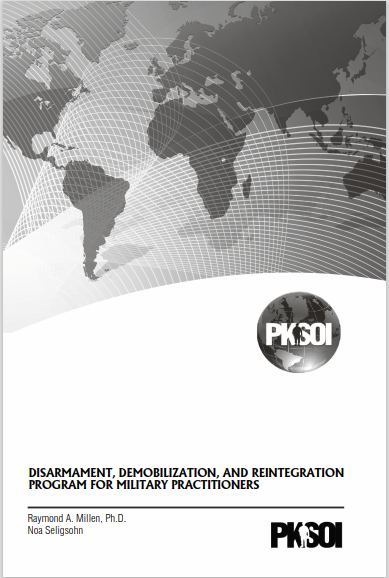




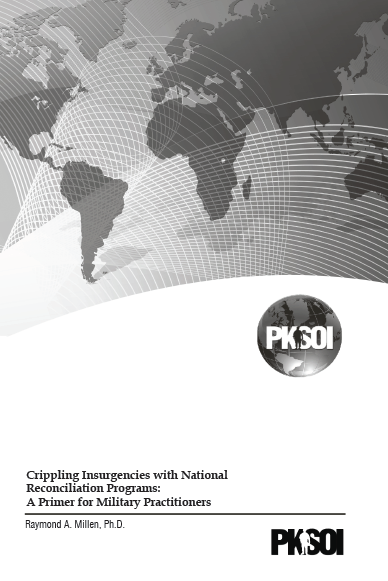
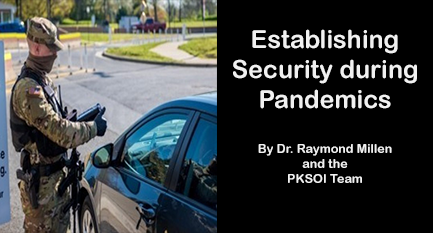
.jpg)

